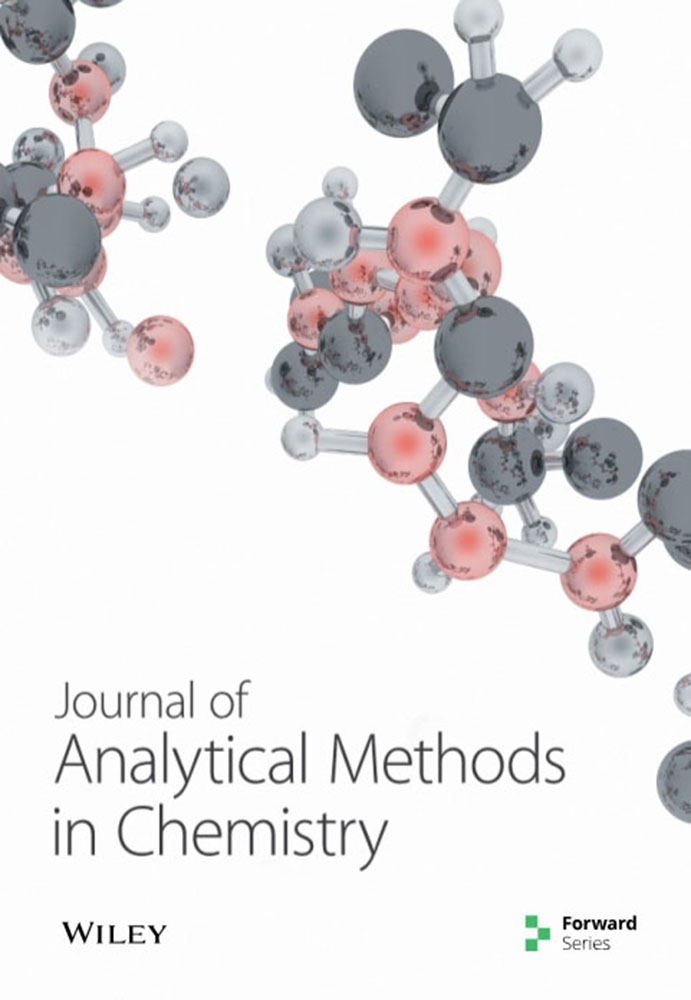固相萃取双通道毛细管电泳法测定茶叶中草甘膦、草铵膦及其主要代谢物
IF 2.3
3区 化学
Q3 CHEMISTRY, ANALYTICAL
引用次数: 4
摘要
本研究采用双通道毛细管电泳-耦合非接触电导率检测(CE-C4D)和固相萃取(SPE)两种分析方法,建立并验证了两种分析方法,分别用于同时测定茶泡茶等流行饮料中草甘膦(GLYP)、草铵膦(GLUF)及其两种主要代谢物氨甲基膦酸(AMPA)和3-(甲基膦酸)丙酸(MPPA)。GLYP、GLUF和AMPA在第一通道中使用背景电解质(BGE)进行分析,背景电解质为1 mM组氨酸(His),经乙酸(Ace)调节pH为2.75。相比之下,MPPA在第二个通道中定量,BGE为30 mM,用3-(N-morpholino)丙磺酸(MOPS)和10µM十六烷基三甲基溴化铵(CTAB)调节pH为6.7。采用固相萃取法,以10 mL 0.5 mM HCl加入甲醇为洗脱液对茶叶冲剂进行处理。在优化条件下,GLYP、GLUF、AMPA和MPPA的检出限(MDL)分别为0.80、1.56、0.56和0.54 μg/l。然后应用该方法分析了16种茶叶冲剂样品中的4种目标化合物。两种乌龙茶泡茶样品中发现GLYP的浓度范围为5.34 ~ 10.74µg/L,三种绿茶泡茶样品中发现GLUF的浓度范围为45.1 ~ 53.9µg/L。本文章由计算机程序翻译,如有差异,请以英文原文为准。
Determination of Glyphosate, Glufosinate, and Their Major Metabolites in Tea Infusions by Dual-Channel Capillary Electrophoresis following Solid-Phase Extraction
In this study, two analytical procedures were developed and validated using dual-channel capillary electrophoresis-coupled contactless conductivity detection (CE-C4D) followed by solid-phase extraction (SPE) for simultaneous determination of glyphosate (GLYP), glufosinate (GLUF), and their two major metabolites, aminomethylphosphonic acid (AMPA) and 3-(methylphosphinico) propionic acid (MPPA), respectively, in a popular beverage such as tea infusions. GLYP, GLUF, and AMPA were analyzed in the first channel using background electrolyte (BGE) of 1 mM histidine (His) adjusted to pH 2.75 by acetic acid (Ace). In contrast, MPPA was quantified in the second channel with a BGE of 30 mM His adjusted to pH 6.7 by 3-(N-morpholino) propanesulfonic acid (MOPS) and 10 µM of cetyltrimethylammonium bromide (CTAB). In addition, the samples of tea infusions were treated using SPE with 10 mL of 0.5 mM HCl in methanol as eluent. At the optimized conditions, the method detection limit (MDL) of GLYP, GLUF, AMPA, and MPPA is 0.80, 1.56, 0.56, and 0.54 μg/l, respectively. The methods were then applied to analyze four target compounds in 16 samples of tea infusions. GLYP was found in two infusion samples of oolong tea with concentrations ranging from 5.34 to 10.74 µg/L, and GLUF was recognized in three samples of green tea infusion in the range of 45.1–53.9 µg/L.
求助全文
通过发布文献求助,成功后即可免费获取论文全文。
去求助
来源期刊

Journal of Analytical Methods in Chemistry
CHEMISTRY, ANALYTICAL-ENGINEERING, CIVIL
CiteScore
4.80
自引率
3.80%
发文量
79
审稿时长
6-12 weeks
期刊介绍:
Journal of Analytical Methods in Chemistry publishes papers reporting methods and instrumentation for chemical analysis, and their application to real-world problems. Articles may be either practical or theoretical.
Subject areas include (but are by no means limited to):
Separation
Spectroscopy
Mass spectrometry
Chromatography
Analytical Sample Preparation
Electrochemical analysis
Hyphenated techniques
Data processing
As well as original research, Journal of Analytical Methods in Chemistry also publishes focused review articles that examine the state of the art, identify emerging trends, and suggest future directions for developing fields.
 求助内容:
求助内容: 应助结果提醒方式:
应助结果提醒方式:


